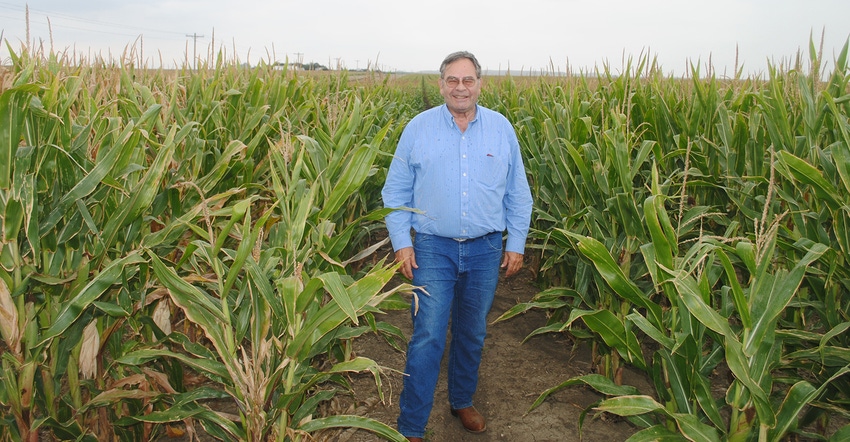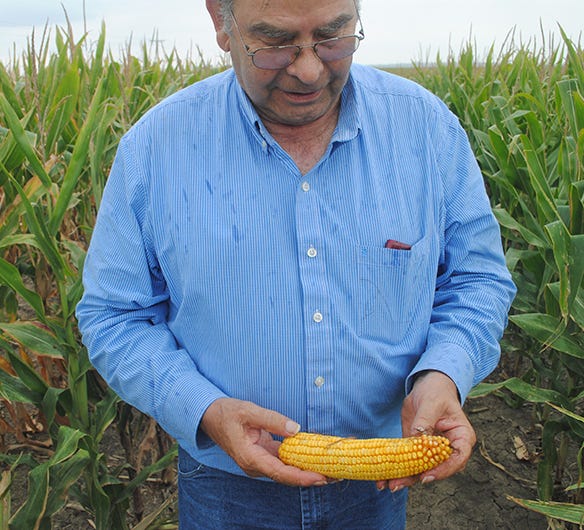
Bill Ferguson farms around 4,000 acres of crops in central South Dakota near Witten with his wife, Joan. Although the latter part of summer this year was wetter than usual, Ferguson’s area is often short on precipitation. Almost 40 years ago, more than half of Ferguson’s cropland lay fallow each summer to conserve precious moisture. That has changed thanks to some major tweaking of crop rotations, an early adoption of no-till and a unique skip-row corn planting strategy.
It didn’t happen overnight, but Ferguson decided to adopt no-till practices on the farm back in 1980. That move also changed the way he handled crop rotations.
Today, after much tweaking over the years, he settled into a long-term rotation that begins with spring wheat, followed by winter wheat, two subsequent years of corn, and then soybeans. "Across the farm, we plant about 40% of the cropland to wheat each year, with 40% in corn and 20% in soybeans," Ferguson explains.
Getting the rotation right was an important part of Ferguson’s long-range dryland strategy. "This rotation has allowed us to completely eliminate summer fallow," he says.
There are several practical management details built into this crop rotation. Starting off with spring wheat allows for early harvest, which better facilitates winter wheat planting in the fall. It is no accident that Ferguson plants two years of corn in a row. He has adopted a unique 30-inch, 60-inch, 30-inch skip row corn planting pattern that actually takes advantage of 60 inches of "fallow" within the corn field each year.
Thanks to GPS and variable rate planting technology, Ferguson is able to plant two 30-inch rows, skip 60 inches and then plant two rows at 30 inches in a pattern across the field. The following year, he plants two 30-inch corn rows into the "fallow" skipped 60-inch area from the previous year and skips a 60-inch area where two rows of corn grew the year before.
This practice makes residue management easier, allowing the planter to get better seed to soil contact by avoiding areas of highest residue within the field from the previous year’s crop. The highest residue areas from the previous year protect soil in the skipped 60-inch area the subsequent year. This alternating strategy, combined with variable rate population control that averages around 21,000 to 22,000 seeds per acre, has paid off with outstanding dryland yields.
Getting the most seed where it has the most potential is also part of Ferguson’s strategy, so corn populations might run from a low of 18,000 in less productive spots to a high of 26,000 in the same fields. The two years of corn are followed by soybeans, again taking advantage of a high residue crop with a lower residue crop, before going back to spring wheat again.
 NEVER ZERO: The corn yields on Bill Ferguson’s dryland skip-row fields in central South Dakota range between 140 and 160 bushels per acre, but even in the driest of years, Ferguson expects some kind of yield because his system conserves moisture to make sure corn pollinates.
NEVER ZERO: The corn yields on Bill Ferguson’s dryland skip-row fields in central South Dakota range between 140 and 160 bushels per acre, but even in the driest of years, Ferguson expects some kind of yield because his system conserves moisture to make sure corn pollinates.

His average corn yields are between 140 and 160 bushels per acre, comparable to standard 30-inch row spacing in a normal year. "In very dry years, when traditional 30-inch corn has trouble pollinating with barren stalks and the silage choppers are pulling in, we still get 60 to 80 bushels per acre," Ferguson says. "One main benefit to this strategy is the reserve moisture to support pollination. If it gets pollinated, we get ears worth combining."
When it comes to drought management, there is no single practice that solves the issues. Many areas of Ferguson’s fields are too wet throughout the year and have been planted to wildlife habitat and cover. By utilizing numerous drought strategies combined with precision tools, Ferguson has boosted the productivity across his entire farm.
About the Author(s)
You May Also Like






